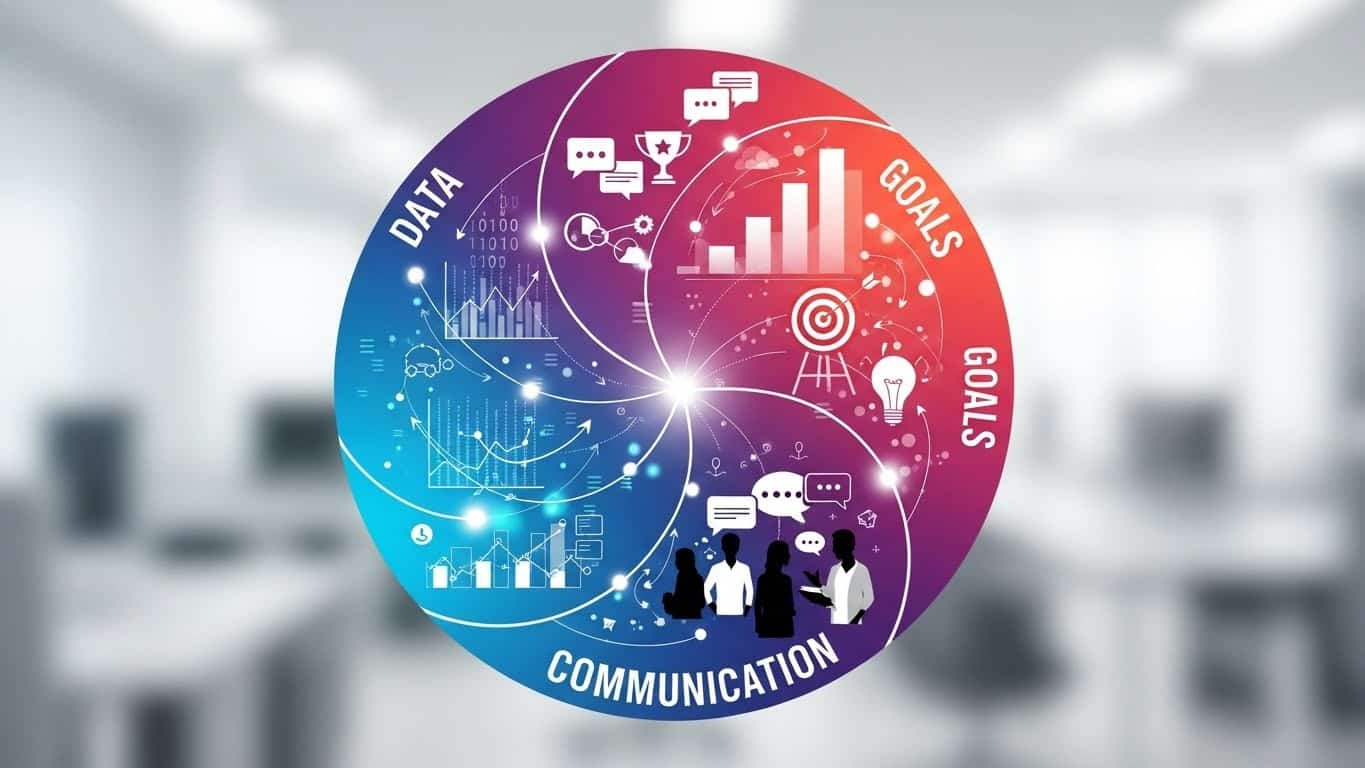Efficiency isn’t something that happens by accident—it’s the result of intentional actions. If you’re a CEO or team leader eager to streamline operations but unsure where to begin, start with these three simple steps. They’re easy to implement and can make a noticeable difference quickly. Best of all, these strategies work for entire companies, departments, or individual teams.
1. KPI Exercise: Identify 3 Key Leading Indicators and Set Realistic Targets
Efficiency is impossible to achieve if you don’t know what you’re measuring. Start by selecting three key performance indicators (KPIs) for your team or company. These should be leading indicators, meaning they can predict future performance rather than just reflect what has already happened. For instance, if your goal is to improve sales, a leading KPI might be the number of qualified leads, not simply total sales revenue.
However, it’s not just about picking the right KPIs—you also need to set realistic targets for each one. Unrealistic goals set your team up for frustration and burnout, while goals that are too easy won’t challenge your team to perform at their best. Strike a balance by analyzing your past performance, industry benchmarks, and capacity. Make sure your targets are achievable, but still push your team to excel.
Once you’ve chosen your KPIs and set realistic targets, don’t stop there. Here’s where many businesses fall short. Have every person on the team—yes, everyone—write down what they will do if the number is in the Yellow (slightly behind target) and if it turns Red (significantly behind). This forces the team to think through proactive solutions before issues arise. It also gives ownership of the results, driving accountability across the board.
For example, if a sales team’s lead generation KPI is lagging, a team member’s Yellow response could be, “I will contact five additional prospects per week.” If it turns Red, they might ramp up outreach by attending two networking events this month. These actions create a buffer against slipping further off track.
Don’t stop at the top level—bring this KPI exercise down to manager and individual roles. If each person knows the metrics they own and has realistic, actionable plans tied to them, it creates a cascade of accountability that naturally improves efficiency.
If this process sounds familiar, it’s because it aligns with the Circle of Productivity, a methodology that emphasizes setting the right metrics and holding your team accountable to them. In fact, Align’s Circle of Productivity can help you organize your business processes by focusing on what truly matters and building a culture of execution around it.
2. Communicate Your KPIs Regularly
Once you’ve got your KPIs locked in, keep them alive. Don’t just review them once a month or, worse, bury them in a report no one reads. Make sure they’re part of your weekly rhythm.
Bring these metrics into weekly team meetings and one-on-ones. Keep it brief, but consistent. Touch on what’s working, what isn’t, and the plan moving forward. By weaving KPIs into regular conversations, they stay top of mind, and course corrections happen before things spiral. You’ll start to notice people naturally aligning their actions with what truly moves the needle for the business.
One company I worked with in the manufacturing space increased output by 12% in just one quarter by making their KPIs part of their weekly discussions. Team members could easily point to key numbers driving success or bottlenecks, which helped them work better together and fix issues faster.
Tools like Align make this process even easier by helping you track your KPIs, and more importantly, providing a clear framework to review and adjust them consistently. You can build these rhythms directly into your team’s communication patterns, reinforcing accountability and visibility across your organization.
3. Start Daily Standups—15 Minutes Can Change Your Day
Communication doesn’t end with KPIs. Efficiency relies on fast, transparent communication between team members, and a daily standup is one of the most effective tools you can implement to achieve this.
The daily standup should take no longer than 15 minutes. Each person answers two key questions:
- What did you accomplish yesterday that’s relevant to the team?
- What are you focusing on today that affects the team?
This isn’t a to-do list or a status report. Instead, it’s a way to surface any blockers, share important updates, and ensure alignment across the team. The beauty of this meeting lies in its simplicity. It forces everyone to think about their day through the lens of team success and encourages people to proactively address roadblocks.
But the real magic happens in the coaching. As a leader, you need to guide your team on what to share and how to make it relevant to the group. For example, instead of, “I’m finishing up a client report,” help them frame it as, “I’m preparing the client report to hand off to the sales team for follow-up.” By focusing on relevance to the team, you’ll start seeing stronger collaboration and fewer communication gaps.
Start small and build from there. This is not the place to review KPIs—keep the focus on what’s happening right now. When done correctly, daily standups transform the way information flows through your business, making teams more agile and responsive.
Aligning your standups with a broader system of accountability, such as Align’s Circle of Productivity, amplifies this impact by ensuring your team consistently focuses on what truly matters to the business. Standups become a key touchpoint for reinforcing your team’s commitment to execution and alignment .
Efficiency Comes from Intentional Action
If you’re looking to improve efficiency, start with these three steps. They might seem simple, but they create a strong foundation for better team alignment, proactive problem-solving, and improved communication. Whether you’re a CEO, manager, or team lead, implementing these practices today will spark positive change and set your team on the path to continuous improvement. And when you’re ready to build on this foundation, using tools like Align can help ensure your efforts are both scalable and sustainable in the long run.





